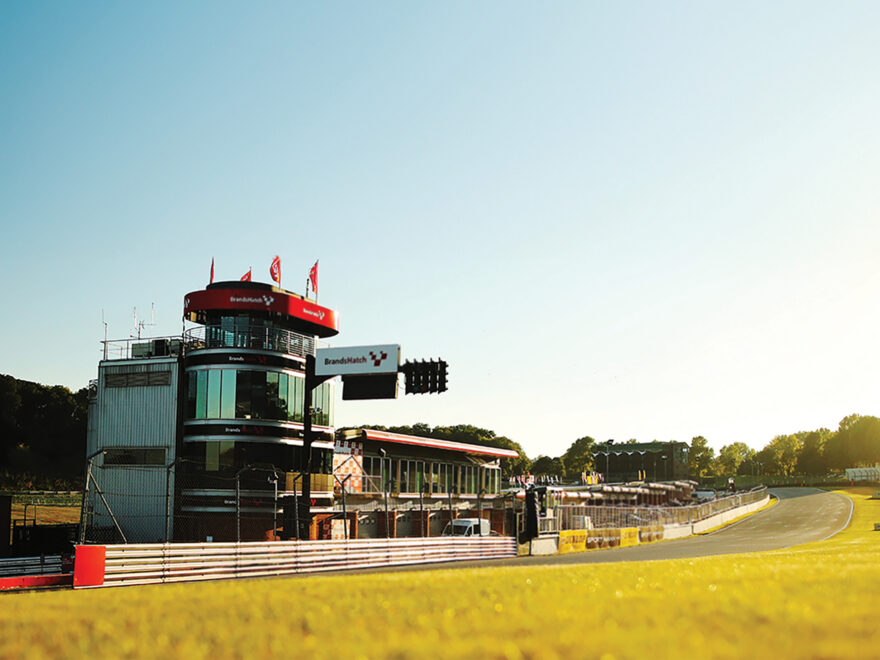With almost 100-years of ‘racing’ history under its belt, we feel it’s time to raise a glass to one of the most iconic racetracks in the world, Brands Hatch.
With its name being a derivative from the Gaelic term ‘de Brondehach’, and multiple racing disciplines, the circuit’s unique combination of dips, cambers, fearsome corners and hills has made Brands Hatch more of an institution than a racetrack.
It all started in 1926 when a bunch of cyclists, led by Ron Argent, decided to take a break by a mushroom field off the London-Dover road after a 125-mile bike tour. Owned by Brands Hatch farm, (and once used for military training), Argent noticed the cool bowl-shaped terrain and asked the farmer if they could use its dirt roads to practise on.
1928 saw Brands Hatch have its first proper race, a four-mile match between cyclists and cross-country runners, the runners won, thanks to Australian world champion runner Jackie Hobin. However, it was in 1947 (when Brands Hatch Stadium Ltd took charge), that the future for the track (and later the track itself) became sealed.
1950 saw the gates to Brands Hatch officially open, laying claim to being Britain’s first post-war purpose-built racetrack.
In 1954, the circuit was reversed and Druids loop was added, pits and spectator banks were built and the facility began to take shape, but a potential setback occurred in 1961 when the land was sold to housing group Grovewood Securities. Thankfully ‘Motor Circuit Developments’ was created and things have barely slowed down since.
A defining moment in Brands Hatch’s history occurred in 1964 when the Grand Prix layout was introduced. This 2.6-mile circuit quickly established itself as a challenging, high-speed circuit, demanding precision, skill, and bravery from the drivers. Over the years, it has played host to 12 Formula 1 Grand Prix events, with legends like Jim Clark, Jackie Stewart, and Ayrton Senna leaving their indelible mark on the circuit.
Paddock Hill Bend acquired a fearsome reputation, claiming the lives of George Crossman, Tony Flory and Stuart Duncan, however, the death of Jo Siffert in 1971 spurred substantial safety enhancements, such as the introduction of debris fencing and tire barriers. These modifications were instrumental in preserving Brands Hatch’s reputation as a world-class circuit.
The F1 GP was last staged in 1986, due in part to a multiple start line collision that seriously injured Jacques Laffite (fellow driver and eventual Brands owner Jonathan Palmer, a qualified doctor, coming to his aid).
The open expanses of Silverstone were subsequently deemed more appropriate to the authorities.
In 2004, Hatch changed hands to MotorSport Vision, the facilities were spruced up and international events like the WTCC and DTM rolled in.
Today Brands Hatch symbolises motorsport excellence, a track that has withstood the test of time and maintained its relevance in a swiftly evolving world. It’s a sanctuary for motorsport enthusiasts and a circuit that authentically captures the spirit and excitement of racing.
Dave McLeod – Motoring Writer


